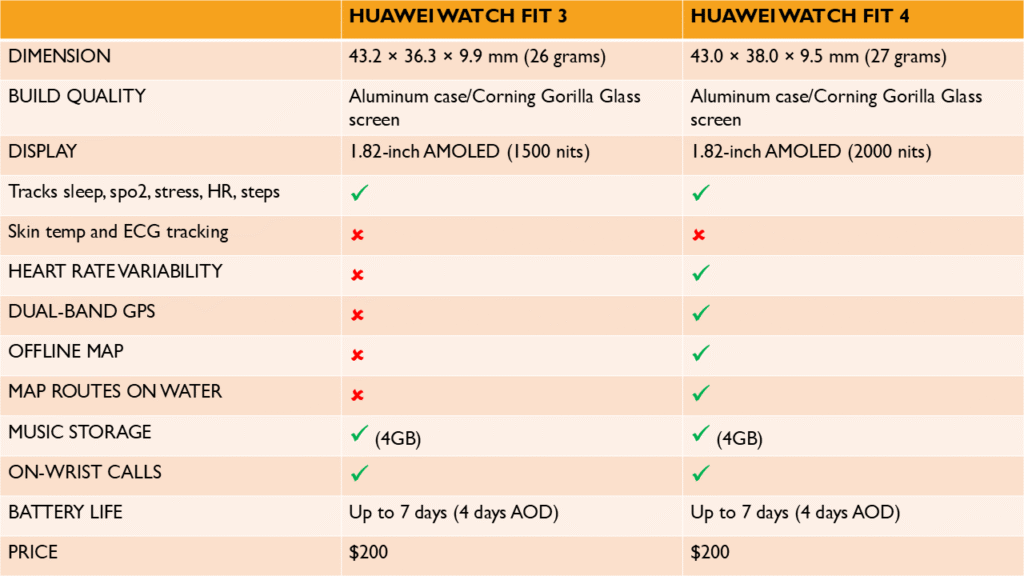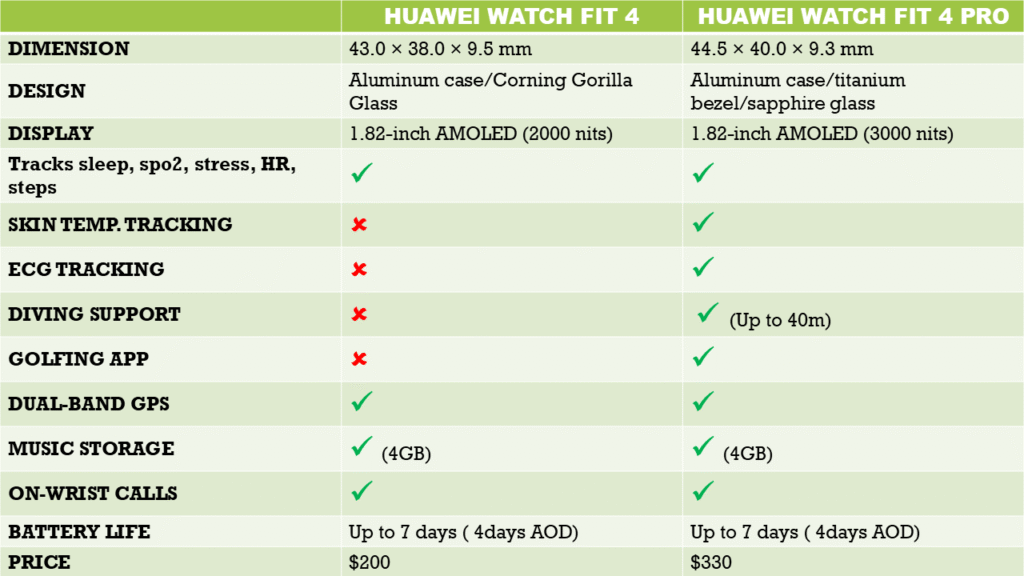Two days ago, at a Product Launch event in Berlin, Huawei officially announced the release of the Huawei Watch Fit 4 and 4 Pro alongside the Huawei Watch 5.
The Watch Fit 4 succeeds last year’s Watch Fit 3. It looks very similar to its predecessor, but welcomes a brighter display, a barometer for higher ground activities, offline map support, and dual-band GPS for increased mapping accuracy in difficult terrains.
In this post, I’ll be comparing the differences between the Huawei Watch Fit 3 vs Fit 4 to help you decide if it is a worthy upgrade.
Huawei Watch Fit 3 vs Fit 4 – Differences

Design
In terms of design, nothing much has changed. The Watch Fit 4 looks very much like its predecessor. It is the same dimension, though the Fit 4 at 9.5mm is 0.4mm slimmer, which makes it one of the slimmest watches.
The build quality is still the same. It is the same aluminum frame with Corning Gorilla Glass.
The Watch Fit 4 like its predecessor, is also rated 5ATM—which means it can withstand shallow water activities, so you can wear it to the shower or swimming pool.
Display
There is a slight improvement in the display department. While the Fit 4 has the same 1.82-inches AMOLED display as its predecessor, it is now 25% brighter. It has the same 2000 nits display brightness as the $100 more Galaxy Watch 7.
The Fit 4 also has a 2.6% increase in screen-to-body ratio that lets you see a little more at a glance.
Moreover, Huawei has added more customizable lively watch faces to the Fit 4.
Health Tracking
In the health tracking department, the Fit 4 like its predecessor, is equipped to track your sleep, heart rate, calories, steps, stress, and blood oxygen.
Though it welcomes a barometer that will allow you to get more insights as you engage in higher ground activities.
The Fit 4 also welcomes dual-band GPS, which improves mapping accuracy in difficult terrains like those with tall buildings.
Even more, there is the offline map feature that will allow you to map your favorite routes without carrying your phone along. You simply need to import a GPX file via the Huawei Health app, and you can navigate offline without your phone.
The Watch Fit 4, unlike its predecessor, is also now able to map your routes on water.
There is also a new Health Insights app that can give guidance on healthier lifestyles—from tips on managing stress, to advice on improving sleep and optimising workouts.
So, beyond the improved display, the Watch Fit 4 is also a more comprehensive fitness tracker than the Fit 3.
Music Storage
Huawei did not specify the storage capacity of the Watch Fit 4. However, like its predecessor, it still features onboard music storage with about 1.5GB available for music storage. It is also equipped with a microphone and speaker that allows you to make and receive calls when the watch is connected to your phone.
In the battery department, nothing has been charged. Like its predecessor, the Watch Fit 4 can go up to 7 days in typical usage. It is up to 10 as in battery saver mode, and up to 4 days when always on is enabled. That’s still better than the 40 hours of Galaxy Watch 7 and 18 hours of Apple Watch 10.
Despite the new additions, the Fit 4 has the same $200 price tag as its predecessor. Though the Fit 3 being old stock, can be bought at a much lower price.
So, Is The Huawei Watch Fit 4 a Worthy Upgrade?

I think so.
The display is brighter. It has a barometer and features dual-band GPS and offline maps.
It’s up to you to decide if these features are worth upgrading to.